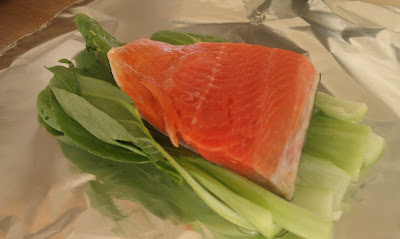I'm reading An Everlasting Meal by Tamar Adler. Well, not just reading. Devouring. Nibbling. Savoring.
I couldn't bear to read this book quickly. Slowly doesn't work, either. I take a bite and chew thoughtfully, sometimes a whole chapter in a sitting, other times reading a few paragraphs and then thinking. I just finished chapter three for the second, but definitely not the last, time.
This is not my usual approach. When I re-read it's usually for the pleasure, not the ponder. I want to remember the plot and characters again. But reading this book has been as much about feeding my soul as it has been about feeding my family.
I first read How to Stride Ahead in the midst of the neverending summer heat wave, simultaneously inspired and repelled by this Bay Area resident describing her Sunday afternoon ritual of roasting vegetables for the week. At the time, the thought of simply turning on the stove was horrifying. Turning on the oven was a nightmare I just couldn't face.
The days are cooler now, and for the past two weekends I've engaged in this ritual of chopping and tossing and tasting.
I've done something like this before, with heads of lettuce. I'll tear up and wash a whole head and then my go-to veg is done for the week. But there's no variety there and I cross my fingers every time I open the salad spinner, hoping the leaves haven't wilted yet.
Roasted vegetables are so much more forgiving. You chop one at a time, throw them in a pan, toss with the essentials (olive oil, salt, pepper) and pop in a hot oven. Adler says they're done not when you wonder if they're done, but when you reach in to taste another.
We eat them at room temperature. I take them out before I start cooking and put them wherever it's warmest to take off the chill. At dinner, we just pass around the plate (last night it was broccoli, celery root, and cloves of garlic--which you don't even need to peel until they are on your plate!) and take what we want. Easier than a salad.
She also converted me on kale. Legitimately. You roughly chop it, cover it halfway with water and a half cup of olive oil, then sprinkle with salt and pepper. Let it cook until it's ridiculously tender, then puree (I love my stick blender for this). I boiled off the remaining water, then spread ricotta on a slice of the bread I baked yesterday, plopped the kale on top and was satisfied in a way I have never been with kale.
I love this book and I love this ritual. I must spend more time on this chapter, looking at its different facets. I want to own the jewels within its pages, to have them belong to my soul and not have them just be someone else's ideas. I want to know that there are many ways to get a vegetable on the table each night.





























